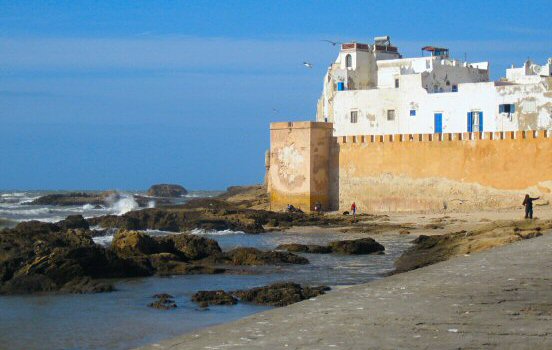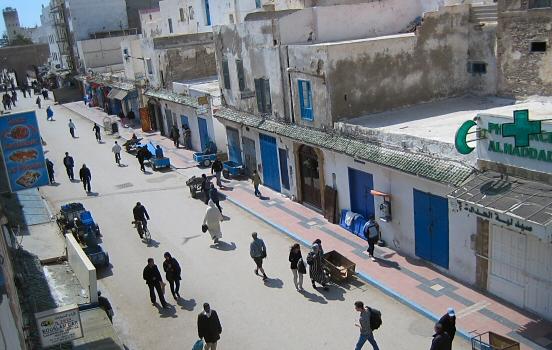Essaouira feels different than many other towns in Morocco. A stubborn, salty ghost town with sand in its teeth and stories in its bones. The kind of place where time limps along, trailing the scent of grilled fish and centuries-old trade routes.
The usual smell of spices are mixed up with a fresh ocean breeze, and the ruckus of Marrakesh is only a distant memory.
The oldest part of the city is surrounded by large ramparts, elements of French military architecture. Even the streets are unusually aligned, designed with a European-style grid layout. I stand at Place Moulay Hassan and watch the spectacle, as the Atlantic crashes into the stone ramparts with the fury of an angry god.
 Ocean versus ramparts. Who will win?
Ocean versus ramparts. Who will win?
Nearby, the old citadel is towering above the cliffs, a remnant of the first fortress built by the Portuguese in the 15th century. Portuguese cannons rust under the sun, still pointing seaward, still defending against threats that no longer come. These days the walls are more of an architectural heritage, since the only attack comes from the hungry sea gulls.
At the port, boats lean like drunks against each other, painted in a palette of blues that belong in a dream. Fishermen mend nets with hands that have never touched a keyboard. Winds sweep in from the ocean, relentless and powerful.
 Shadows in the medina.
Shadows in the medina.
I enter the medina through the massive gate Bab Doukkala and stroll down the street, passing by beautifully arranged piles of spices under the careful watch of tiny stray cats. I go up a small staircase into a building and order a bowl of Tajine, the slow-cooked stew which can be found everywhere in the country. It’s not making my stomach leap with joy, but at least I got away from the wind for a while.

Comments
No comments yet.
Leave a reply